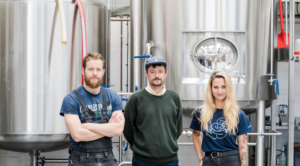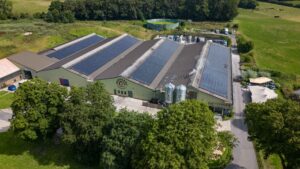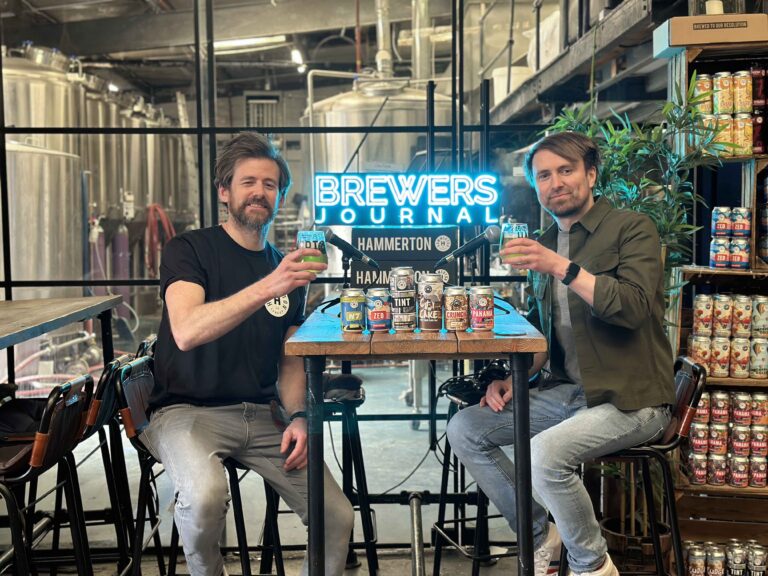If you’ve enjoyed some of the fantastic imperial stouts produced by Azvex then you’ll know that Jack Walker is a maestro when it comes to this style of beer. Here he shares how you can make one of your very own.
I’ve done my best here to make an Azvex style take on a big coffee and vanilla stout. This is a deliciously un-efficient and difficult style of beer to make.
I have no bones about using sugars and DME on a homebrew scale to stop those modest mash tuns from bursting at the seams, and still get a decent yield or beer in the end.
I prefer DME to dextrose as there is a flavour contribution, and a more complex blend of sugars. There is also a long boil to reduce down your collected wort and increase gravity. This can be shortened/extended depending on how efficient your system is.
Yeast health is going to be key. The hydrostatic pressure of high gravities is a really unfriendly environment for yeast, so they will need plenty of help.
Relatively cheap are yeast nutrients to give them everything they need to get going. Fermaid O is a particular favourite of ours for high gravity beers.
There are a few expensive items which will really help you get the yeast to attenuate and keep healthy. Namely, a diffusion stone and O2 canister. A good oxygenation at pitch, and then 12-24hrs later will help your yeast proliferate nicely.
Ultimately they will help in every beer you brew from now on, so worth the investment if you’re a long time home brewer.
Despite this, don’t be surprised if fermentations can lag a bit, you may need to pitch more yeast or oxygenate or feed some sugar in to get the fermentation to restart.
It is also really helpful to have good temperature control for your fermentation vessel. When the yeast does take off, it does so vigorously. You may find it hard to control, and it may indeed bubble out of your airlock, lovely and messy.
When you’re sure the fermentation has ended, make sure you crash the yeast out at 10 Celsius and transfer the beer off the yeast cake.
Then give it a long maturation period to allow the remaining yeast to fully drop out. Add your adjuncts when you’re confident it is tasting nice and yeast free, give it a week to infuse and package.
Recipe
Evil Overlord
13% ABV
SG 1.164
FG 1.066
If amounts are specified, it’s based on a 20l batch size
Malt Bill
5.5kg Golden Promise
1kg Chocolate Wheat
1kg Flaked Oats
.5kg Medium Crystal
.5kg Chocolate
.25kg Carafa III
.25kg Chateau Cafe
.25kg Rice hulls
5kg Dried Malt Extract (boil addition)
Mash – 65c – 60min 18l water (2kg/l)
Sparge 75c 17l water. Collect 26l wort around 1.065sg
Boil – 180 Min
Boil Hops
180 mins –30 ibu addition of high alpha hop
10min 15g Fermaid 0
10 min 15g Yeast Nutrient
Yeast
US05/WLP001- 3-4 sachets
Dry Hop – 100g of good quality local coffee beans. I prefer light/medium roasts over dark roasts. A good starter region is Brazil, and then experiment with others next time you brew
10 Madagascan vanilla bean pods, split in two. Sterilise in a little vodka first before adding.
Fermentation
Start at low at 17 Celsius and gradually allow the fermentation temperature to increase as the beer attenuates up to 22 Celsius.
Once sure fermentation is complete, crash to 10 celsius and transfer off your yeast.
Maturate the beer to clear and more yeast, and then add adjunct additions a week before packaging.
Water
We aim for 150ppm Ca and 200+ppm Cl for Imperial stouts. We also use bicarbonates to keep our mash and boil pHs in line. 5.3 mash, 5ph boil.
Equipment
Fermentation temperature control- help you keep that fermentation steady
Oxygenation equipment. The yeast will likely need help to attenuate fully.
Muslin bags. These are really helpful to remove your adjuncts easily when you’re tidying up.








